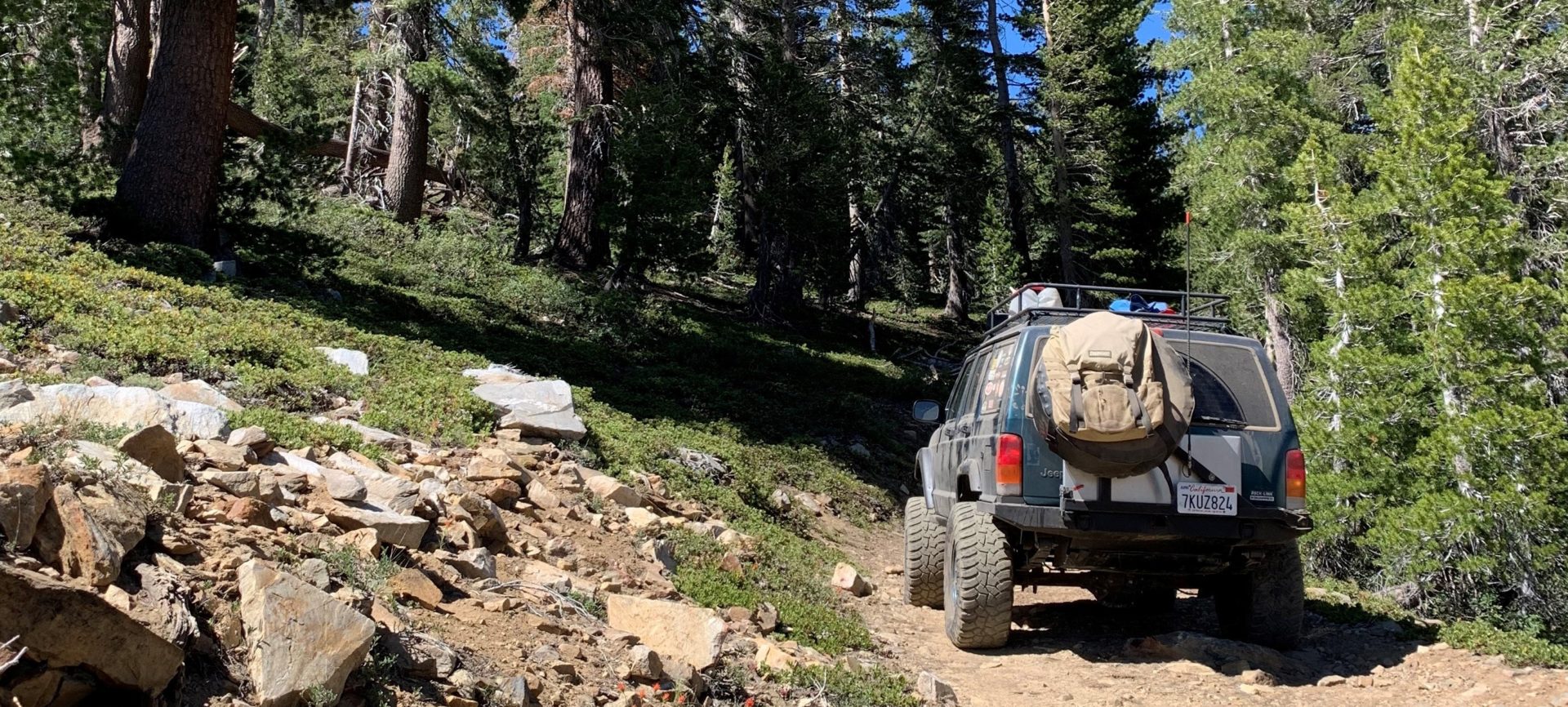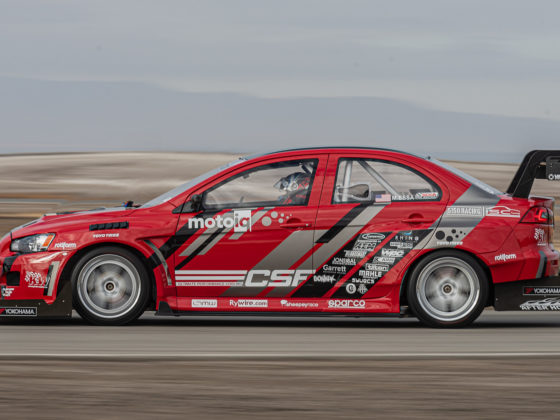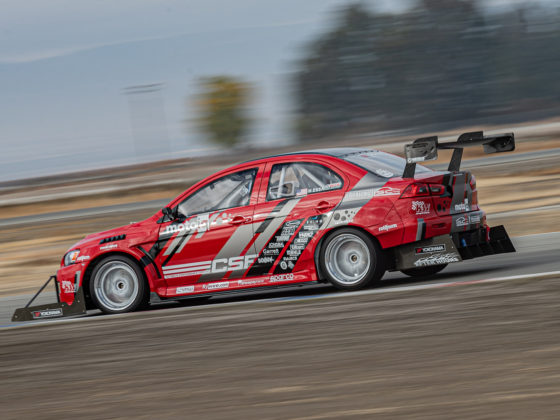But, which “LS” to pick. GM put the Gen III small block in dozens of vehicles in even more iterations. My requirements, in rough order, were: emissions-legal, cost, availability, adaptability to the Jeep, horsepower, and weight. Yes, power and weight were last on this list. Times change, and since any “LS” will be an improvement over what’s currently in there, I’m still making it better.
After weeks of research on the Internet, this is my take on things. I do not intend this by any means to be a Bible on the Gen III family of engines, merely a quick and dirty analysis on the common engines and their applicability to my use case. There are variances in each, but you’ll get the gist of it. The LQ4 is not legal to swap into a Jeep in California due to EPA emissions class, but I included its information below for those that live in free states. Air conditioning information is the signal the PCM uses to turn on AC, and is definitely something to keep in mind for any vehicle retaining AC as the complexity goes up considerably if you want to retain PCM control. I ruled out the Gen IV due to additional sensors (California emissions complexity), displacement on demand, and lack of junkyard donors.
Anyway, on to the list:
LR4: Commonly found in 99-2005 1/2 ton trucks, SUVs and Vans. Truck accessories, cathedral port heads (706 casting), truck oil pan (rear sump, tall), iron block, 4.8L and 255-285hp. Throttle body: Cable (99-2002), DBW (2002+). Cost: cheap. Availability: Common. EPA emissions class: Light Duty Truck/SUV. Air Conditioning: 12v+ input (99-2002, all vans), serial input (2003+). Common automatic transmission: 4L60E.
LM7: Commonly found in 99-2005 1/2 ton trucks, SUVs and Vans. Truck accessories, cathedral port heads (706 casting), truck oil pan (rear sump, tall), iron block, 5.3L and 270-295hp. Throttle body: Cable (99-2002), DBW (2002+). Cost: cheap. Availability: Outnumber flies. EPA emissions class: Light Duty Truck/SUV. Air Conditioning: 12v+ input (99-2002, all vans), serial input (2003+). Common automatic transmission: 4L60E.
LQ4/LQ9: Commonly found in 2001-2007 (99-2000 are all iron head and not desirable) 3/4 ton trucks, SUVs and vans (LQ4), and upmodel trucks and Cadillac SUVs. Truck accessories, cathedral port heads (317, 035 casting), truck oil pan (rear sump, tall), iron block, 6.0L and 300-345hp. Throttle body: Cable (99-2002), DBW (2002+). Cost: low. Availability: Almost everywhere (LQ4) or rare (LQ9). EPA emissions class: Heavy Duty Truck/SUV (LQ4), Light Duty Truck/SUV (LQ9). Air Conditioning: 12v+ input (99-2002, all vans), serial input (2003+). Common automatic transmission: 4L80E.
L33: Commonly found in 2005-2007 1/2 ton upmodel trucks and SUVs. Truck accessories, cathedral port heads (243, 799 casting), truck oil pan (rear sump, tall), aluminum block (80lb weight savings), 5.3L and 310hp. Throttle body: DBW. Cost: expensive. Availability: don’t blink or its gone rare. EPA emissions class: Light Duty Truck/SUV. Air Conditioning: 12v+ input (99-2002, all vans), serial input (2003+). Common automatic transmission: 4L60E.
LQ9: Commonly found in 2002-2007 upmodel 1/2 ton trucks and SUVs. Truck accessories, cathedral port heads (317, 035 casting), truck oil pan (rear sump, tall), iron block, 6.0L and 345hp. Throttle body: DBW. Cost: moderate. Availability: Uncommon. EPA emissions class: Light Duty Truck/SUV. Air Conditioning: 12v+ input (2002), serial input (2003+). Common automatic transmission: 4L60E.
LS1: Commonly found in 99 Corvettes, F-bodies, GTOs. Car accessories (Corvette being the shortest), cathedral port heads, corvette oil pan (rear sump, short), F-body oil pan (rear sump, medium), GTO oil pan (front sump, medium), aluminum block, 5.7L and 305-350hp. Throttle body: cable (F-body, GTO), DBW (Corvette). Cost: expensive. Availability: rare. EPA emissions class: passenger vehicle. Air Conditioning: 12v+ input. Common automatic transmission: 4L60E (GTO/F-body, Corvette is rear transaxle and not useful).

Jeep adaptability was obviously paramount to my decision. I wanted to make sure to maintain maximum swap parts compatibility as well as parts availability. Since I’ve had excellent experiences with the Holley family of products in off-road applications (I’ve helped convert 4 vehicles to Holley’s extremely capable HP engine management system), any engine I picked had to be compatible with as many off-the-shelf parts as possible to save time on the swap, and there’s really no better source for LS swap parts than the Holley family of companies.

In the end, the decision ended up falling into my lap when I noticed a neighbor had a 2003 4WD Suburban 1500 languishing in a corner of his property. With over 200,000 miles on the clock, the drivetrain was definitely not fresh, but the LM7 ran smooth and strong, the transmission did not have any issues, all of the emissions equipment was intact, and with thousands in owed backfees to the DMV, the price was far below market value. Starting with an entire vehicle is a bonus since I could salvage every emissions component (catalytic converters are not legal for resale in California) and related drivetrain part without being nickled and dimed to death, I could start and test drive it, and I could recoup some of the swap’s cost by selling unneeded parts (current complete drivetrain cost after parts sales is $700 and falling by the day).

Plans are relatively simple for the swap: refresh (or rebuild) the engine and rebuild the transmission to ensure a fresh start, add some reliability and minor hop up parts for performance, and shoehorn it into the Jeep once all parts have been acquired. Stay tuned for the next installment where we tear into our 200,000 mile LM7 to see what booby traps await.




15 comments
Holy shit! Every time I come to this site “to just see what’s happening” I run into a project I’ve been thinking of doing myself for a while. Somewhere in this computer I have a massive bookmark folder (I do need to thin them out) titled “swap “LS” engine into different 4X4s”
I think I was researching ZJ and WJ Grand Cherokees (I want the front and rear coil suspension) And quite a number of Land Rovers.
Looking forward to this build.
WJ is the current sweet spot in new vs capability vs cost. Gas tank hangs waaaay low, but can be tucked, and the suspension is JK version 0.75 and isn’t terribly hard to swap JK axles into. ZJs are piles, but if you’re not keeping any of the drivetrain and electronics, not terrible. Both come with shitty stock axles (generally LP D30 and D44A, A for aluminum pumpkin), so don’t plan on keeping them for long if rock crawling.
The problem I run into with the different generations of Grand Cherokee (or jeeps in general) You get a relatively reliable “engine” (318, 360, 4.0, 4.2) As long as you pay very close attention to heat management. And wiring harnesses that could best be described as Soviet Chinese tractor.
Or hand grenades with the pins pulled most of the way out (4.7, 3.7) but kinda stout transmissions. But in all generations the axles are pretty weak. The 30s not that bad if you truss and sleeve and chromoly the entire thing. An explorer 8.8 swap is an easy and cheap upgrade for the rear.
I was planning on the WJ with the 4.0. Hanging the spare tire on a bumper or roof. Cutting out the spare tire well and tucking the gas tank. Then doing the stroker. But as you said you are already $5Gs in the hole for that. And you still have to deal with (more) heat and the wiring harnesses. That’s why I’m kinda looking forward o this project. I know it won’t be a definitive swap and all. But here in Arizona they (phoenix) basically follow California’s emissions laws. I’ve asked the smog referee about doing this is the engine has to match the vehicle class (no CTSV supercharged engines) and it had to retain all the emissions equipment. But he had no list or detailed answer to what “emissions equipment” includes.
All of it needs to be there. Basically, if it sets off a MIL, it’s required. AZ is a little less stringent on engine changes, but…
D30s are stronger than you think, just don’t be stupid with it. Locked on 33s with stock shafts (welded 760x caps) for years now, no issues. If you’re jammed in a spot, back out or winch. If you have to give it more than 1/4 throttle before wheelspin, you’re probably gonna break something. The truss went on when I got a set of 3 tube bypasses for it, but turned out an XJ doesn’t have the axle width to clear them without touching a tire or the frame or both. The Fox Factory 2.0s baaaaarely fit.
You left out the LQ9, visually indiscernible from the LQ4, and should have landed in the correct weight/emissions class. Thus an LQ4 branded as an LQ9 should fly. If I were to guess though, this 5.3 will run cooler than the 4.0 and your cooling issues should be behind you. I wouldn’t crack the motor open myself, keep the magic smoke inside. They run forever. I’d also toss that 4L60 time bomb in favor of a 4L80. Either way I think you’re going to like this rig once it’s swapped.
Yeah, completely forgot about the LQ9, but it’s pretty hard to find as well, people will fight you in the junkyard if you do find one, and I bought a donor that didn’t have it, so shoot me. Updated the article. 🙂
Yeah, cooling should be better with the 5.3 since it’s an engine designed in the last 20 years, has aluminum heads, and doesn’t burn huge amounts of gasoline to make small amounts of power.
Motor should’ve been cracked open. There were timebombs in there. Stay tuned for part 2. 🙂
4L60 to 4L80 swap may be something for the future, but it’s physically much larger and the mounts I’m using were designed with the 60. Clearance for the driveshaft, links and all-important cats will be bad enough as it is. There’s also the need to re-parameter the PCM for 4L80 operation, which I’m told is something the ref might check. That being said, the original 4L60E has a shorter 1st for better crawling, and motivated that pig of a suburban around for well over 100k miles (including RV towing) and still shifted firm when I drove it home. It’ll get refreshed while it’s out, but I think it’ll be just fine for mild towing (tent trailer at most) and barely warmed over 5.3.
I’m curious what a smog ref would look for on a reflashed PCM? Does he know it’s modified and fails you on that? Transmissions aren’t emissions items and that segment can be swapped without touching anything emissions related or VIN related. Speaking of VIN, how does that work in a swap in CA? I don’t think you can punch a Jeep VIN into a GM PCM (never tried). I’m curious what mounts and parts you’ll be going with here, but I’m guessing that all comes out in part 2.
Transmissions aren’t, but the sensors involved will throw check engine lights, therefore under their purview. Either way, the 4L60E is plenty for a 4000lb Jeep that will rarely see 5000rpm, and the gearing better suited as well.
VIN is easy: they add a new barcode/label over the existing emissions label so when the tech scans it, it comes up as 2003 Chevy Suburban.
Steve any thoughts on how the BSFC/MPG may change based on the swap you’re doing? Seems like the EPA ratings put the Suburban as worse fuel economy than the Cherokee but I realize there’s a decent weight savings in the Cherokee.
The stock 3200lb Cherokee 4×4 on 28″ tires (13/18) was marginally better than the 5500lb Suburban 4×4 on 30.6″ tires (13/17), sure. The Tahoe was 14/18 so better/same than the Cherokee and still almost 2000lbs heavier than the stock Cherokee. Currently, my XJ gets 12-14mpg mixed driving, and a ridiculous 9-11mpg when wheeling. A large part of this is due to heatsoak: the Cherokee’s ECU massively retards timing to protect the motor, which then increases heatsoak, and it also bumps engine idle speed to make the mechanical fan run faster, which forces me to use the brakes more to compensate and makes even more heat. It’s a shit show to say the least.
My assumption is the Cherokee will get similar mileage to the stock Tahoe despite the short gearing, large MTs and extra weight from armor. Being able to run a large electric fan (no slim fan that will fit will provide nearly enough airflow for the 4.0) and larger radiator will help a TON to keep fuel economy reasonable. Factory ECUs do stupid things to protect the motor from heat, and a negatively sliding timing curve is one of them.
Great job writing this. I dig your style and look forward to the rest of the project. I just crammed a supercharged LS3 into my XJ and it will be 49 state legal, couldnt waste my time with CA approved headers… It can be done but might not be worth it for most.
Headers is an area I’m extremely nervous about. Not just the headers, but the cat location requirements.
Sr20powah! Is what you need for that xj lol.
Gathering all the info I can to do a Cali 98′ XJ LS swap. Really digging your info and writing.
Thanks man. Should be a fun time at the ref…